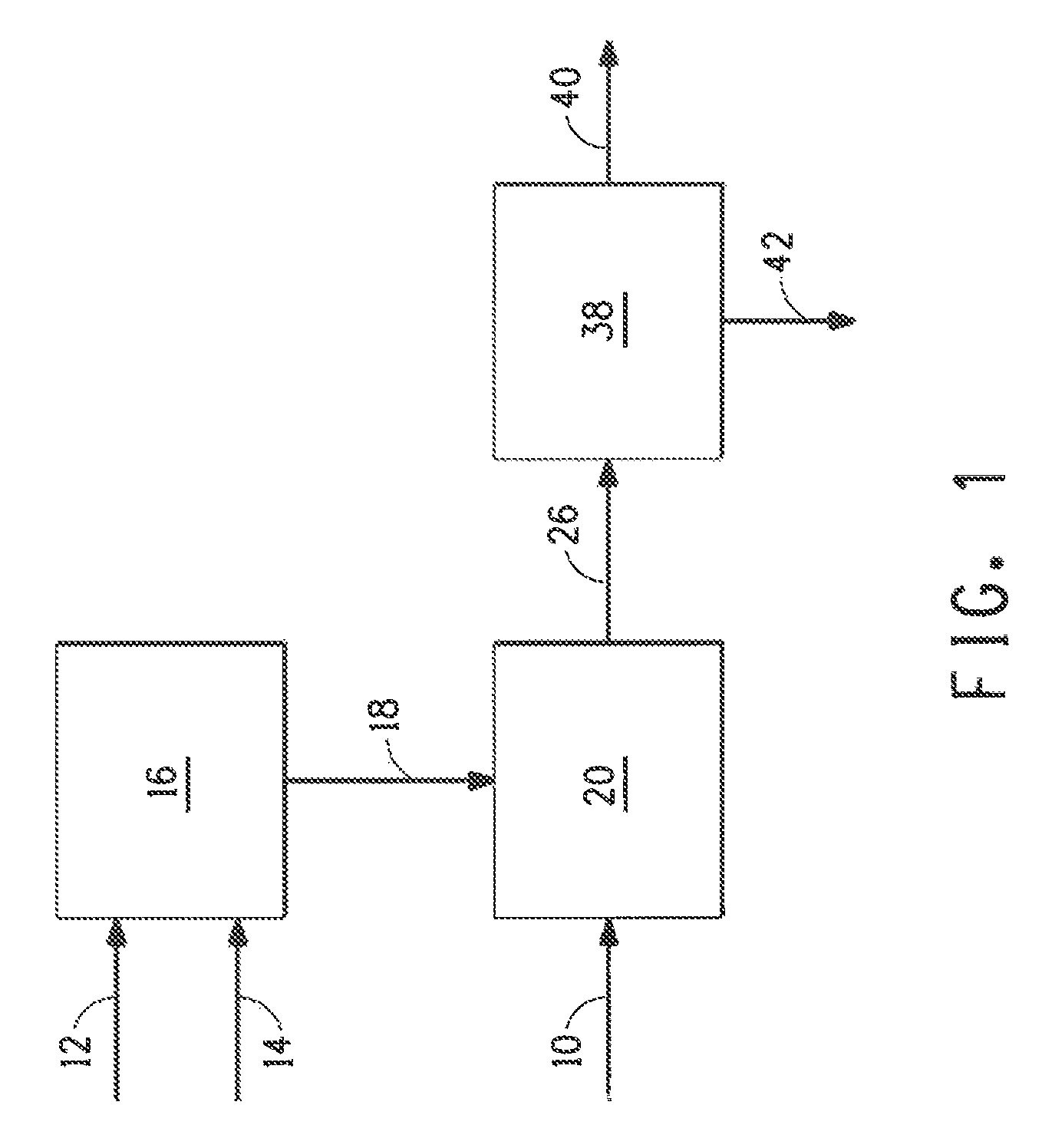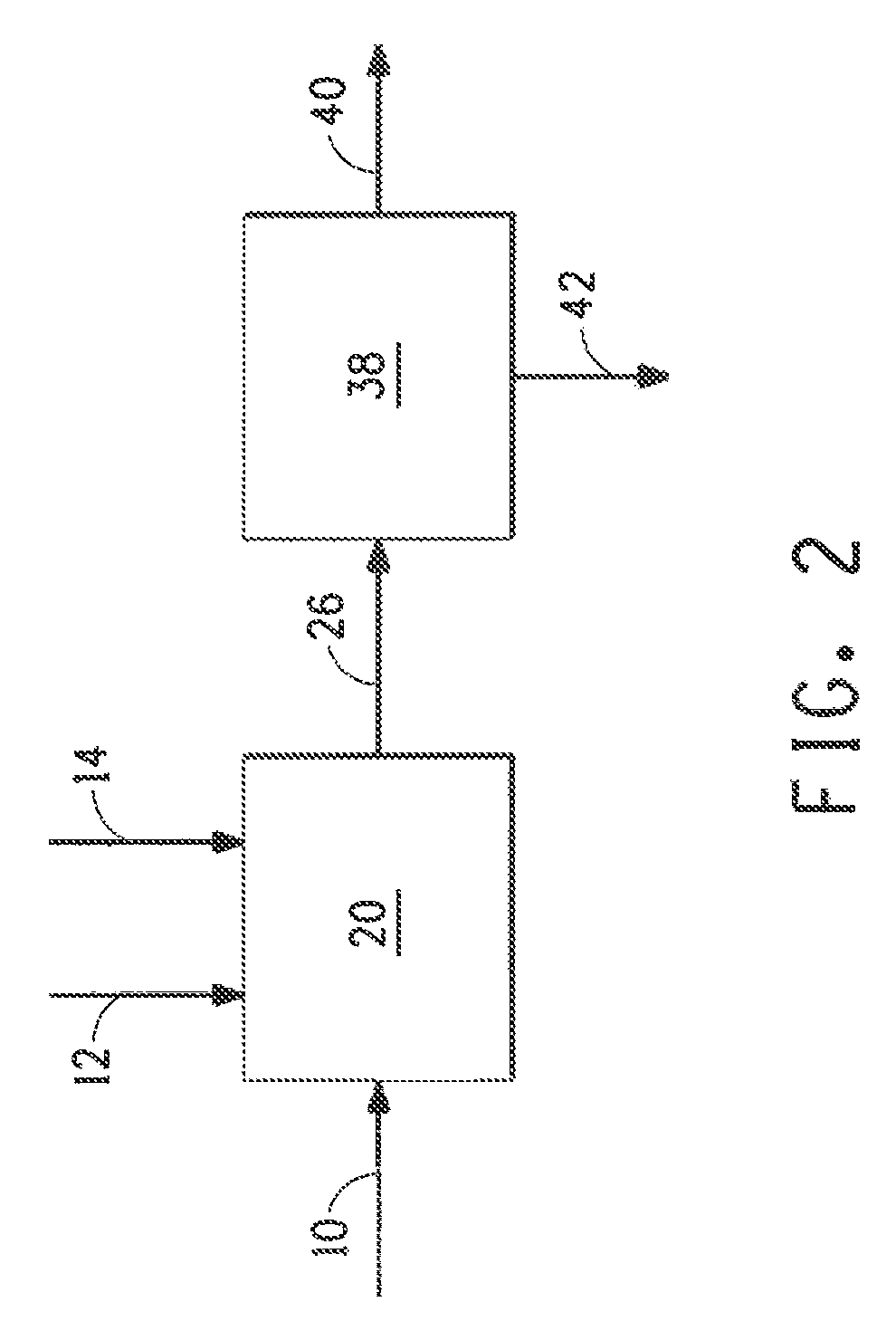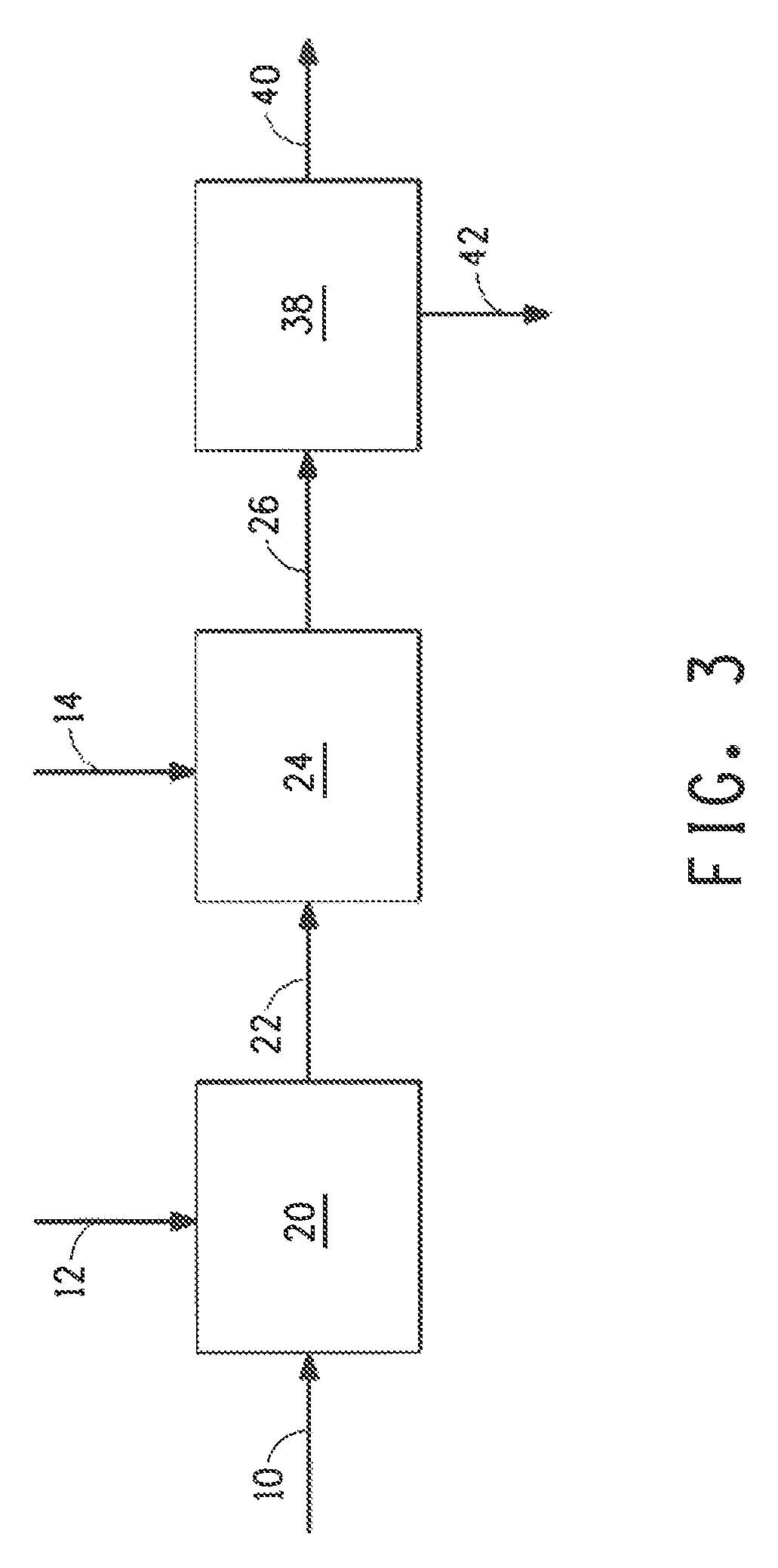Method for production of butanol using extractive fermentation
a technology of extractive fermentation and butanol, which is applied in the field of industrial microbiology and the fermentation production of butanol, can solve the problems of limited biological production of butanol, high cost, and inability to meet the requirements of the environment, and achieve the effect of increasing the butanol partition coefficient of the organic extractant composition
- Summary
- Abstract
- Description
- Claims
- Application Information
AI Technical Summary
Benefits of technology
Problems solved by technology
Method used
Image
Examples
example 1a
Biocompatibility of Triisobutylene with Ethanologen
[0271]Into each of two 125 ml shake flasks, 20 ml of an aqueous culture medium containing glucose at a concentration of 21 g / liter and a 0.5 OD suspension of a naturally occurring ethanologen yeast strain was added. A volume of 10 ml of triisobutylene (Tokyo Chemical Industry Co., >90% mixture of isomers, with an estimated log P of 5.8) was added on top of the aqueous suspension of one of the flasks. These flasks were placed in an incubating oven controlled at 32° C. and continuously shaken. After 4 hours, the aqueous phases of both flasks were analyzed and found to contain less than 0.1 g / liter glucose. No significant difference in glucose uptake was observed between the two flasks.
example 1b
Biocompatibility of Triisobutylene with Isobutanolagen
[0272]Two 125 ml flasks were individually prepared with twenty milliliters (20 ml) of an aqueous culture medium containing glucose at a concentration of twenty-eight grams per liter (28 g / L) to which a zero point five (0.5) OD suspension of a genetically modified isobutanolagen yeast strain (PNY2141) was added. Ten milliliters (10 ml) of triisobutylene (Tokyo Chemical Industry Co., >90% mixture of isomers, with an estimated log P of 5.8) was added on top of the aqueous suspension to one of the flasks. The flasks were placed in an incubating oven controlled at thirty-two degrees Celsius (32° C.) and continuously shaken. The glucose concentration and OD were monitored for each of the two flasks. Table 2, reproduced below indicates the results from the monitored flasks.
[0273]Growth was monitored by measuring OD and glucose concentration. Some impedance to growth was observed in the flask containing the triisobutylene.
[0274]
TABLE 2OD...
example 2
Biocompatibility of a Triisobutylene-COFA Mixture
[0275]Into each of two 125 ml flasks, 20 ml of an aqueous culture medium containing glucose at a concentration of 32 g / liter and a 0.5 OD suspension of a genetically modified isobutanologen yeast strain was added. A volume of 10 ml of a 50% mixture of triisobutylene (Tokyo Chemical Industry Co., >90% mixture of isomers, with an estimated log P of 5.8) and corn oil fatty acid was added on top of the aqueous suspension of one of the flasks. These flasks were placed in an incubating oven controlled at 32° C. and continuously shaken. Growth was monitored by measuring OD. No significant difference in growth was observed between the two flasks as shown in Table 3.
[0276]
TABLE 3OD values for an isobutanologen grown in the presence and absence of a 50:50 mixture of triisobutylene and corn oil fatty acid (COFA).Time (hr)OD with No SolventOD with solvent00.50.570.90.9131.51.6233.73.1294.14.0374.34.3505.05.0605.45.5
PUM
| Property | Measurement | Unit |
|---|---|---|
| temperature | aaaaa | aaaaa |
| temperature | aaaaa | aaaaa |
| pH | aaaaa | aaaaa |
Abstract
Description
Claims
Application Information
 Login to View More
Login to View More - R&D
- Intellectual Property
- Life Sciences
- Materials
- Tech Scout
- Unparalleled Data Quality
- Higher Quality Content
- 60% Fewer Hallucinations
Browse by: Latest US Patents, China's latest patents, Technical Efficacy Thesaurus, Application Domain, Technology Topic, Popular Technical Reports.
© 2025 PatSnap. All rights reserved.Legal|Privacy policy|Modern Slavery Act Transparency Statement|Sitemap|About US| Contact US: help@patsnap.com



